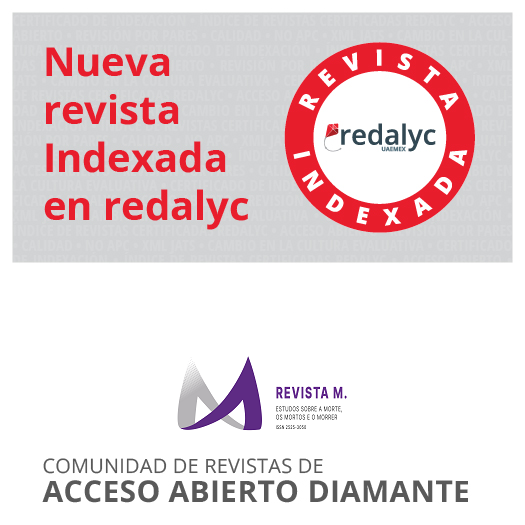Cosmos de imagens: um vislumbre sobre a iconografia das urnas funerárias da 21ª dinastia
DOI:
https://doi.org/10.9789/2525-3050.2022.v7i14.278-294Palavras-chave:
religião egípcia, religião funerária, iconografia, arte egípcia, ataúdes amarelosResumo
Icônicas peças do mobiliário funerário egípcio, os ataúdes passaram no transcorrer da história por profundas mudanças em suas formas, arranjos e decoração, tanto no âmbito real quanto privado. Durante a 21ª dinastia e início da 22ª observa-se simultaneamente a continuidade da estética Raméssida, ao mesmo tempo em que uma ampla gama de temas iconográficos e vinhetas passaram a cobrir quase que a totalidade das superfícies das urnas privadas. Cenas inéditas foram integradas em paralelo àquelas derivadas de fontes religiosas diversas, e estas foram entrelaçadas, por meio de sofisticados recursos de intericonicidade, de forma a garantir a proteção e regeneração do morto e integrá-lo à dinâmica dos fenômenos cósmicos. Propomos aqui lançar um olhar sobre um número desses temas, apresentando alguns dos empréstimos e reinterpretações de composições da realeza e os intrincados cruzamentos simbólicos estabelecidos entre as cenas.
Downloads
Referências
Aldred, C. et al. (1980). L’Égypte du crépuscule: De Tanis à Meroé, 1070 avant J.C.-IVe siècle après J.C. Paris: Gallimard.
Boulanger, R. (1965). La peinture égyptienne et l’Orient ancien. Lausanne: Éditions Rencontre.
Cauville, S. (2012). Offerings to the gods in Egyptian temples. Lovaina: Peeters.
De Araújo Duarte, C. (2014). Crossing the landscapes of eternity: parallels between Amduat and funeral procession scenes on the 21st dynasty coffins. In R. Sousa (ed.) Body, Cosmos and Eternity: New Trends of Research on Iconography and Symbolism of Ancient Egyptian Coffins (pp. 81-90). Oxford: Archaeopress.
De Araújo Duarte, C. (2017). Scenes from the Amduat on the funerary coffins and sarcophagi of the 21st Dynasty. In G. Rosati; M. C. Guidotti (ed.). Proceedings of the XI International Congress of Egyptologists (pp. 159-165). Oxford: Archaeopress.
De Araújo Duarte, C. (no prelo). Desembaraçando as tramas interpretativas: reflexões sobre os usos e conteúdos do Livro do Amduat durante a 21ª dinastia. In V. C. Porto; M. S. Vasques, M. Teixeira-Bastos. Arqueologia Clássica no Brasil: Reflexões sobre o mediterrâneo antigo em homenagem a Maria Isabel D’Agostino Fleming. São Paulo.
Drioton, E.; Sved, É. (1950). Art égyptien. Paris: Arts et métiers graphiques.
Frankfort, H. (1933). The cenotaph of Seti I at Abydos. Londres: Egypt Exploration Society.
Hornung, E. (1963). Das Amduat. Die Schrift des verborgenen Raumes. Wiesbaden: Otto Harrassowitz.
Hornung, E. (1982). Der agyptische Mythos von der Himmelskuh. Eine Atiologie des Unvollkommenen. Freiburg: Universitätsverlag Freiburg Schweiz.
Hornung, E. (1990). The Valley of the kings, horizon of eternity. Nova York: Timken Publishers.
Hornung, E. (1999). The ancient Egyptian books of the afterlife. Ithaca: Cornell University Press.
Hornung, E.; Abt, T. (2007). The Egyptian Amduat, The Book of the Hidden Chamber. Zurique: Living Human Heritage Publications.
Ikram, S.; Dodson, A. (1998). The mummy in ancient Egypt. Equipping the dead for eternity. Londres: Thames & Hudson.
Kitchen, K. A. (1986). The Third Intermediate Period in Egypt (1100-650 BC). Warminster: Aris & Phillips Ltd.
Mekhitarian, A. (1954). Egyptian painting. Genebra: Skira.
Möller, G. (1901). Das @b-Cd des Osiris nach Sargdarstellungen des neuen Reiches. Zeitschrift für Ägyptische Sprache und Altertumskunde, 39, 71-74.
Myśliwiec, K. (2000). The twilight of ancient Egypt, first millennium B.C.E. Ithaca: Cornell University Press.
Niwiński, A. (1987). The Solar-Osirian unity as principle of the theology of the “State of Amun” in Thebes in the 21st Dynasty. Journal de la Société Orientale “Ex Oriente Lux”, 30, 89-106.
Niwiński, A. (1988). 21st Dynasty coffins from Thebes. Chronological and typological studies. Mainz am Rhein: Phillip von Zabern.
Niwiński, A. (1989a). Studies on the illustrated Theban funerary papyri of the 11th and 10th centuries B.C. Freiburg: Universitätsverlag Freiburg Schweiz.
Niwiński, A. (1989b). Mummy in the coffin as the central element of iconographic reflection of the theology of the 21st Dynasty in Thebes. Göttinger Miszellen, 109, 53-66.
Niwiński, A. (1995). Le passage de la XXe à la XXIIe dynastie. Chronologie et histoire politique. Bulletin de l’Institut Français d’Archéologie Orientale, Cairo, 95, 329-360.
Niwiński, A. (2019). Coffins of the Twenty-first and Twenty-second Dynasties: the sacred landscape of Western Thebes. In H. Strudwick; J. Dawson (ed.) Ancient Egyptian coffins: Past, present, future (PP. 58-65). Oxford: Oxbow Books.
Piankoff, A. (1954). The Tomb of Ramesses VI. New York: Bollingen Foundation.
Piankoff, A. (1964a). Quel est le «Livre» appelé [medjat jmy dwat]? Bulletin de l’Institut Français d’Archéologie Orientale, 62, 147-149.
Piankoff, A. (1964b). The litany of Re. New York: Bollingen Foudation.
Piankoff, A.; Rambova, N. (1957). Mythological papyri. New York: Bollingen Foudation.
Roulin, G. (1996). Le Livre de la Nuit: Une composition égyptienne de l’au-delà. Freiburg: Universitätsverlag Freiburg Schweiz.
Sadek, A.-A. F. (1985). Contribution à l’étude de l’Amdouat: Les variantes tardives du Livre de l’Amdouat dans le Musée du Caire. Freiburg: Universitätsverlag Freiburg Schweiz.
Schmidt, V. (1919). Sarkofager, Mumiekister, og Mumiehylstre i det gamle Aegypten. Typologisk Atlas. Copenhagen: J. Frimodts Forlag.
Smith, W. S. (1958). The art and architecture of ancient Egypt. Harmondsworth: Penguin Books.
Downloads
Publicado
Como Citar
Edição
Seção
Licença

Este trabalho está licenciado sob uma licença Creative Commons Attribution 4.0 International License.
Licença Creative Commons CC BY 4.0




















